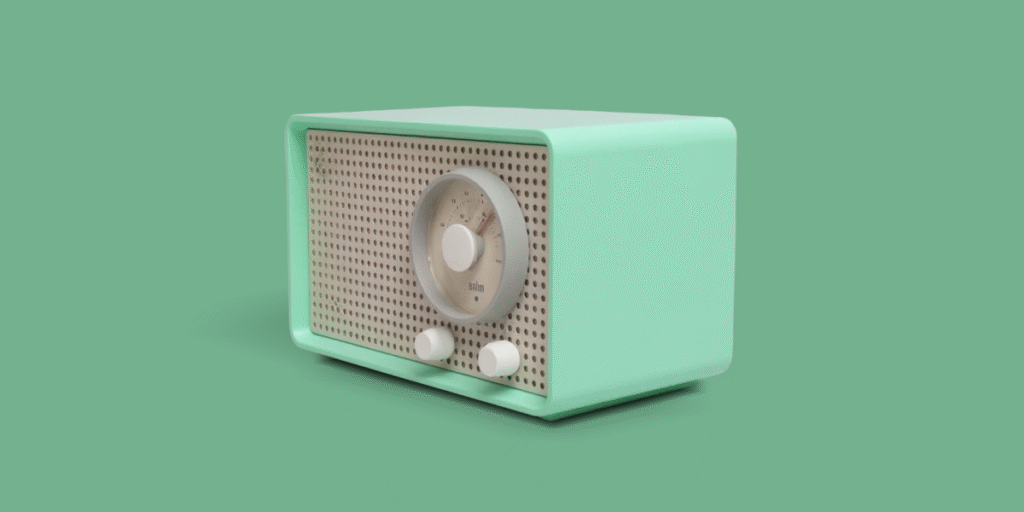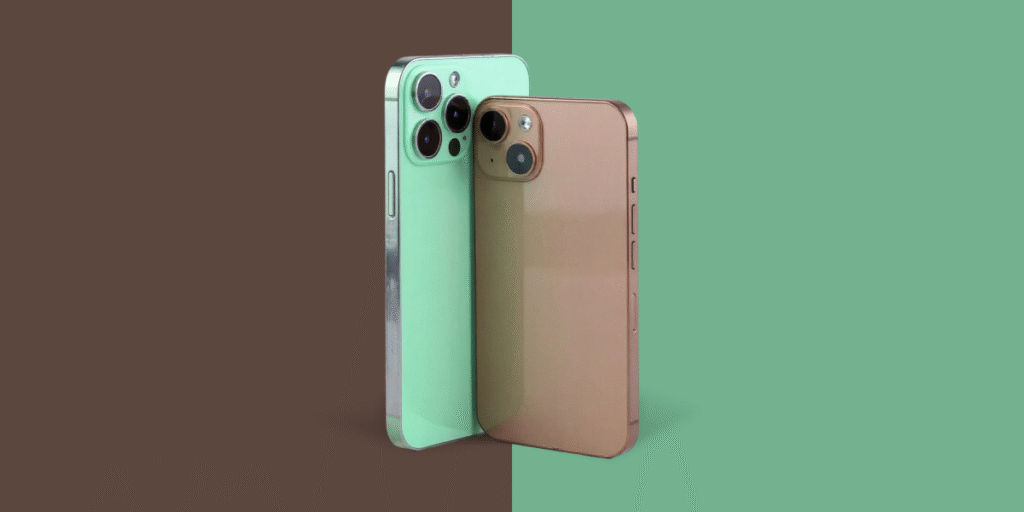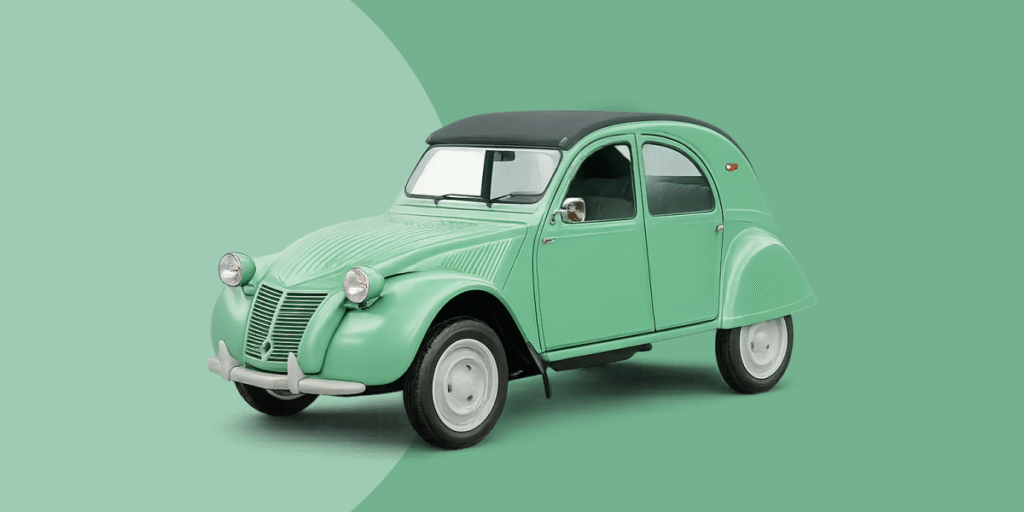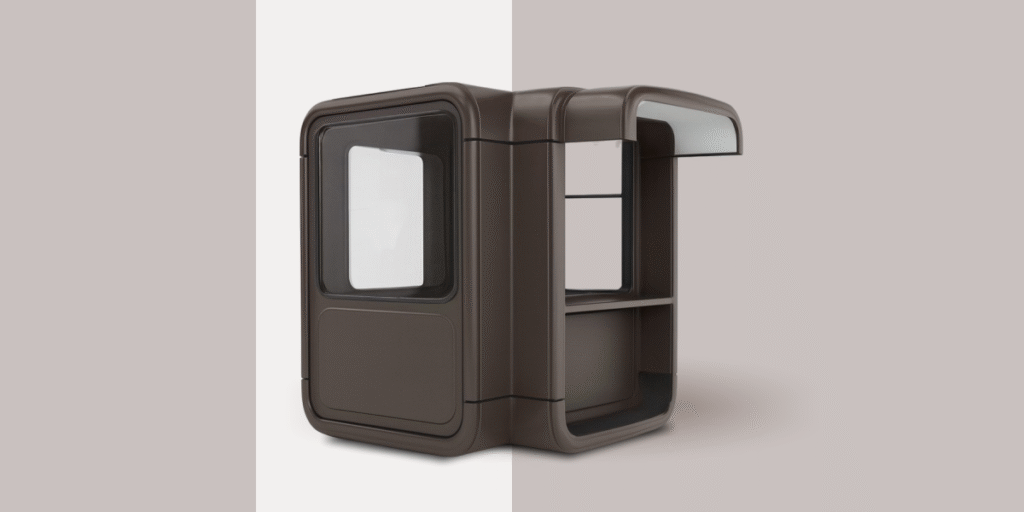Some ideas never fade. Nearly a century after the Bauhaus first challenged how we think about design, its philosophy of simplicity, function, and accessibility still shapes the world around us. From radios to smartphones and from cars to furniture, everyday objects continue to carry its spirit forward. Domovago is part of this same tradition, seeking resilient and adaptable solutions that belong to everyone.

1 Braun Table Radio SK 25 (1955)
In the 1950s, Dieter Rams brought Bauhaus principles into everyday life through his work at Braun. One of the clearest examples is the Table Radio SK 25, a design that strips away ornamentation and focuses purely on clarity, usability, and form.
The SK 25 was more than a household object, it was a design statement. Every line and curve served a purpose, and every material was chosen for function. This was Bauhaus philosophy applied directly to consumer electronics: form follows function. Its clean, minimal design language still feels modern decades later.
Rams’s work at Braun became the blueprint for generations of designers, including Apple’s Jonathan Ive. The SK 25 shows how Bauhaus ideals of simplicity, honesty, and accessibility can shape products that endure in both function and beauty.

2 Apple iPhone (2007–Today)
When the first iPhone was introduced in 2007, it changed not just technology but design itself. Its clean, intuitive form, a simple rectangle with a single button, was a radical break from the cluttered devices of the time. This direction was no accident, it carried the spirit of Bauhaus through the influence of Braun’s Dieter Rams on Apple’s chief designer, Jonathan Ive.
Apple embraced Rams’s belief that good design is as little design as possible. Function shaped form, the iPhone’s smooth lines, clear interface, and absence of unnecessary decoration made it both beautiful and practical. The design was so effective that it became the standard for the entire industry. Today, nearly every smartphone looks alike, flat screen, rounded corners, minimal buttons, because Apple’s Bauhaus-inspired clarity left no room for alternatives.
The iPhone is proof that Bauhaus values, clarity, simplicity, accessibility, are not confined to the past. They still guide how we interact with the most everyday objects in our lives.

3 Citroën 2CV (1948–1990)
Launched in post-war France, the Citroën 2CV was designed with one clear purpose, to provide affordable, practical transport for ordinary people. Its mission was simple, carry four passengers and fifty kilos of goods across rural roads while being cheap to run and easy to repair. The result was a car stripped of luxury but full of functionality, perfectly in line with Bauhaus values.
The concept was partly inspired by Le Corbusier’s Voiture Minimum, a visionary idea for a simple, efficient, people’s car. While Le Corbusier’s design never went into production, its philosophy influenced the thinking behind the 2CV. Both embraced the belief that design should serve society, not just the privileged few.
The 2CV became known for its simplicity, versatility, and resilience. Its light frame, modest engine, and innovative suspension made it a reliable companion in both city streets and countryside fields. The design was honest and unpretentious, proving that good design is not about extravagance but about solving real needs.

4 Kiosk K67 (1966–1990s)
Designed in 1966 by Slovenian architect Saša J. Mächtig, the Kiosk K67 became a landmark in Yugoslav street design. Conceived as a modular, prefabricated booth that could serve many purposes, from newsstands to cafés, it embodied Bauhaus principles of functional design meant for everyday life.
K67’s modular form made it affordable, adaptable, and easy to install. Its cheerful, rounded look and bright colors made it instantly recognizable across cities. By the time production ceased in 1999, around 7,500 units had been made, and while most remained in Yugoslavia, many were exported to the rest of the world.
K67’s design significance continues today. It has been exhibited at New York’s MoMA, featured in Times Square as part of a design showcase, and continues to appear in cities like Berlin, sometimes repurposed as cafés or art installations. These kiosks not only bridge architecture and industrial design but also reflect how thoughtful design can embed itself into public life with adaptability and cultural resonance.
Want to learn more about Bauhaus? Read Bauhaus: The Lasting Influence.

5 IKEA Poäng Armchair (1976–Today)
Designed in 1976 by Noboru Nakamura in collaboration with IKEA’s Lars Engman, the Poäng Armchair has become one of the most enduring and beloved pieces of modern furniture. Its bentwood frame and simple profile clearly echo Alvar Aalto’s Armchair 406 from 1939, offering a strong post Bauhaus nod to the movement.
The chair is both comfortable and efficient. Its cantilevered design allows for a gentle rocking motion, and its construction uses affordable, mass-produced materials. True to the Bauhaus spirit, every curve and joint serves a purpose, balancing form and function without excess.
With more than 1.5 million units sold annually and over 30 million produced overall, the Poäng brings thoughtful design into countless homes worldwide. It proves that Bauhaus ideals of simplicity, utility, and accessibility can thrive in the mass market and make good design available to everyone.
